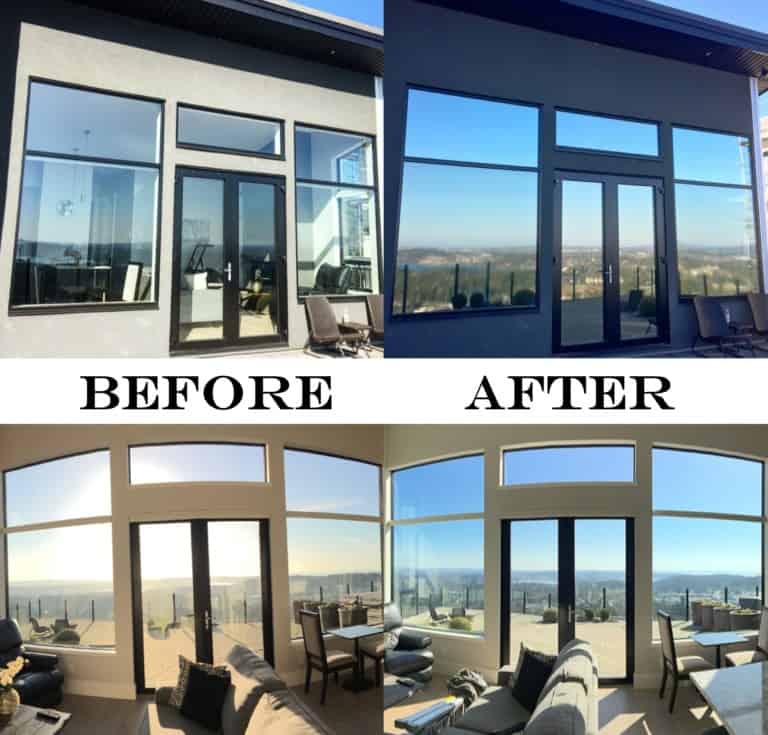Residential Window Tint: Keep Your Home Comfortable Year-Round
How Residential Home Window Tinting Improves Your Home's Power Efficiency
Residential window tinting provides an engaging remedy for homeowners seeking to improve energy performance within their living rooms. By using specialized movies to home windows, it effectively decreases warm transfer, consequently maintaining interior temperature levels and decreasing the demand for too much home heating or air conditioning.
Recognizing Home Window Tinting
Recognizing home window tinting is essential for homeowners seeking to improve both convenience and power performance in their living spaces. Residential Window Tint. Window tinting entails the application of a slim movie to the inside or exterior surface of glass windows. This film can significantly modulate the quantity of sunlight and heat that enters a home, thus affecting interior environment conditions
There are various types of window tinting movies available, each with distinctive buildings. The efficiency of window tinting is usually determined by its Visible Light Transmission (VLT) percent, which shows exactly how much light can pass via the film.
Advantages of Energy Performance
Window tinting not just enhances visual appeals yet also plays a substantial role in boosting energy effectiveness within residential areas. By reducing warm transfer via windows, colored movies create a much more secure indoor environment, which can lead to considerable decreases in energy usage for cooling and heating. This energy effectiveness converts into lower energy costs, offering house owners with significant long-term cost savings.

Additionally, window tinting enhances the comfort of living spaces. By minimizing glow and blocking harmful UV rays, colored home windows create an even more enjoyable environment, which can cause enhanced health for passengers. The protection versus UV rays also assists preserve furnishings and flooring from fading, adding to the longevity of family items.
Just How Tinting Works
Tinting movies run with a mix of sophisticated products and technologies made to control the quantity of solar power going into a home. Primarily composed of polyester, these movies frequently include metallic or ceramic fragments that soak up and reflect warm. This twin capability enables them to dramatically decrease the infiltration of ultraviolet (UV) rays and infrared radiation while allowing visible light to go through.
The performance of home window tinting is measured by its solar warm gain coefficient (SHGC), which shows just how much solar power is transmitted with the home window. Reduced SHGC values are more effective as they denote higher heat being rejected. In addition, home window tints can feature a range of tones, permitting property owners to tailor their aesthetic preferences while boosting energy effectiveness.
Furthermore, these films work as a barrier, preventing warm loss during chillier months by mirroring indoor heat back right into the space. This thermal insulation effect complements the cooling benefits gotten throughout warmer months, contributing to a balanced interior environment year-round. By managing solar power properly, residential window tinting not just boosts convenience yet additionally plays an essential duty in lowering power usage and reducing utility bills.
Choosing the Right Color

There are different kinds of home window movies readily available, consisting of dyed, metalized, and ceramic. Ceramic films provide exceptional warm control without endangering exposure and are highly resilient, making them go to this site a prominent option.
Visible light transmission (VLT) is one more vital variable, as it shows the quantity of natural light that can pass through the tinted glass. Property owners ought to select a color with a VLT that matches their illumination preferences while still offering sufficient glare reduction.
Additionally, assessing the solar heat gain coefficient (SHGC) can aid establish just how well a color can block heat from sunshine. A reduced SHGC suggests much better heat control, ultimately boosting power effectiveness.
Installment and Maintenance Tips
Proper installment and maintenance are vital parts in making best use of the advantages of residential home window tinting. To accomplish optimum results, it is advisable to work with a qualified specialist for installation. This makes certain that the tint is used properly, avoiding air bubbles, wrinkles, or imbalance that might endanger performance. Specialists click over here also make use of specialized tools and methods, which can boost the toughness and effectiveness of the tint.
Complying with installment, upkeep is important to extend the life of the window film. It is suggested to wait at least 30 days before cleaning up the colored home windows to enable the sticky to treat completely.
Resolving these concerns immediately can avoid further damages and keep energy efficiency. By sticking to these setup and maintenance pointers, home owners can ensure their window tinting proceeds to offer significant energy financial savings and comfort for years to come.
Verdict
In verdict, domestic window tinting offers as an efficient solution for improving energy performance within homes. By minimizing heat transfer and obstructing damaging UV rays, window movies contribute to reduce energy intake and enhanced interior comfort. The option of ideal tinting products, in addition to appropriate installment and upkeep, additionally makes the most of my response these benefits. Inevitably, home window tinting represents a sustainable investment that not only decreases utility costs but also advertises a comfy living atmosphere throughout the year.
Home window tinting involves the application of a thin movie to the inside or outside surface area of glass windows. By decreasing warm transfer via home windows, tinted films produce a much more steady interior environment, which can lead to significant reductions in energy usage for heating and air conditioning.The performance of home window tinting is gauged by its solar warmth gain coefficient (SHGC), which indicates how much solar energy is transmitted with the window. By handling solar energy successfully, property home window tinting not just boosts convenience yet additionally plays an essential duty in lowering power intake and decreasing energy costs.
By lowering warmth transfer and obstructing dangerous UV rays, home window movies contribute to lower energy consumption and improved interior convenience.